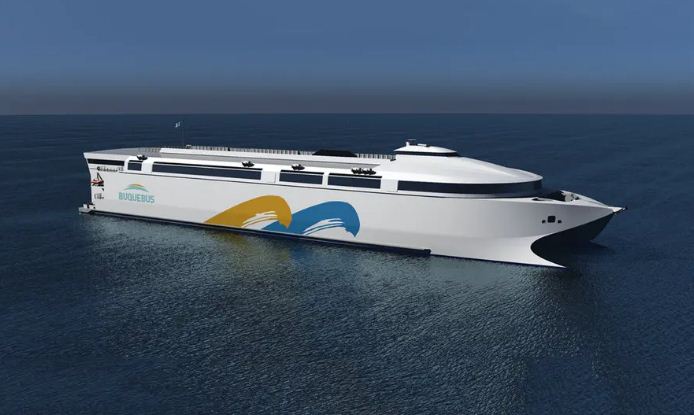Australian company Incat Tasmania unveiled details of the ‘Utility Ro-Pax’, the new all-electric ferry commissioned by Argentina’s river transport company “Buquebus”.
The vessel will be able to carry 2,100 passengers and 226 vehicles on board. In addition, its main route will be between Argentina and Uruguay, which will make it an important means of transportation.
Initially, Incat Tasmania proposed that the ferry would be powered by Liquefied Natural Gas. However, after analyzing Buquebus’ options, it was determined that the ferry would operate with two electric motors.
Read also: Uber and Cabify Have a Significant Impact on Emissions Reduction in Latin America
Features
It is a vessel that would reach 500 tons in weight. The design shows that the Incat model will have two electric motors, one of 5 MW and the other of 9.6 MW power. Thus, it will reach an average speed of 25 knots (46 km/h), and a range of up to 100 kilometers fully loaded with passengers and vehicles.
The objective of this type of vessels is to reduce pollution and CO2, which reaches 3% worldwide by the maritime sector. The aim is to reduce emissions by 30% by 2025 and 40% by 2030.
Environmental Contribution
Zero-emission ferries would be an excellent place to start electrifying, as they typically travel the same waterways, making it easier to install charging infrastructure. Electric ferries will not only help save the environment, but also save operators a lot of money.
According to reports, the first all-electric ferry in Norway reduced costs by 80%. In addition, the electrified ship “Ellen,” operating in southern Denmark, helps save up to 2,000 tons of CO2 emissions each year.



